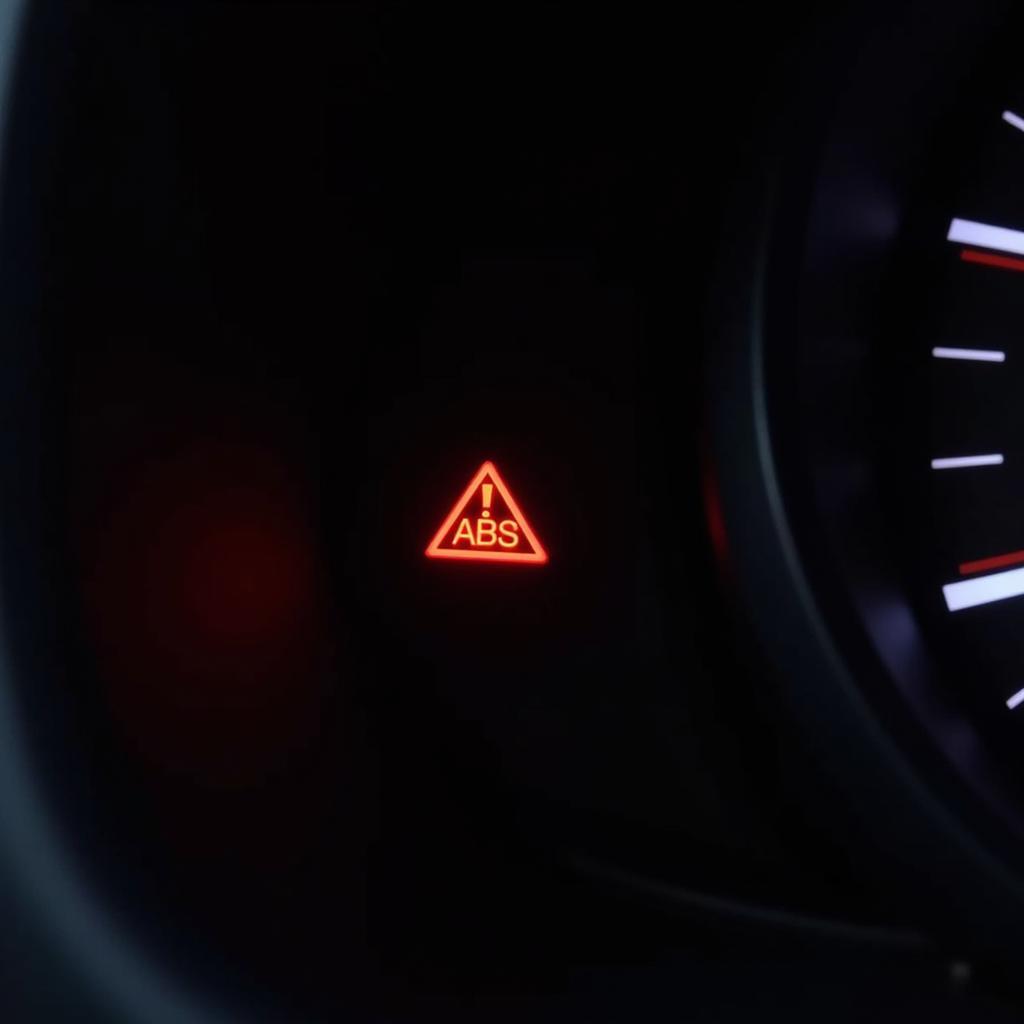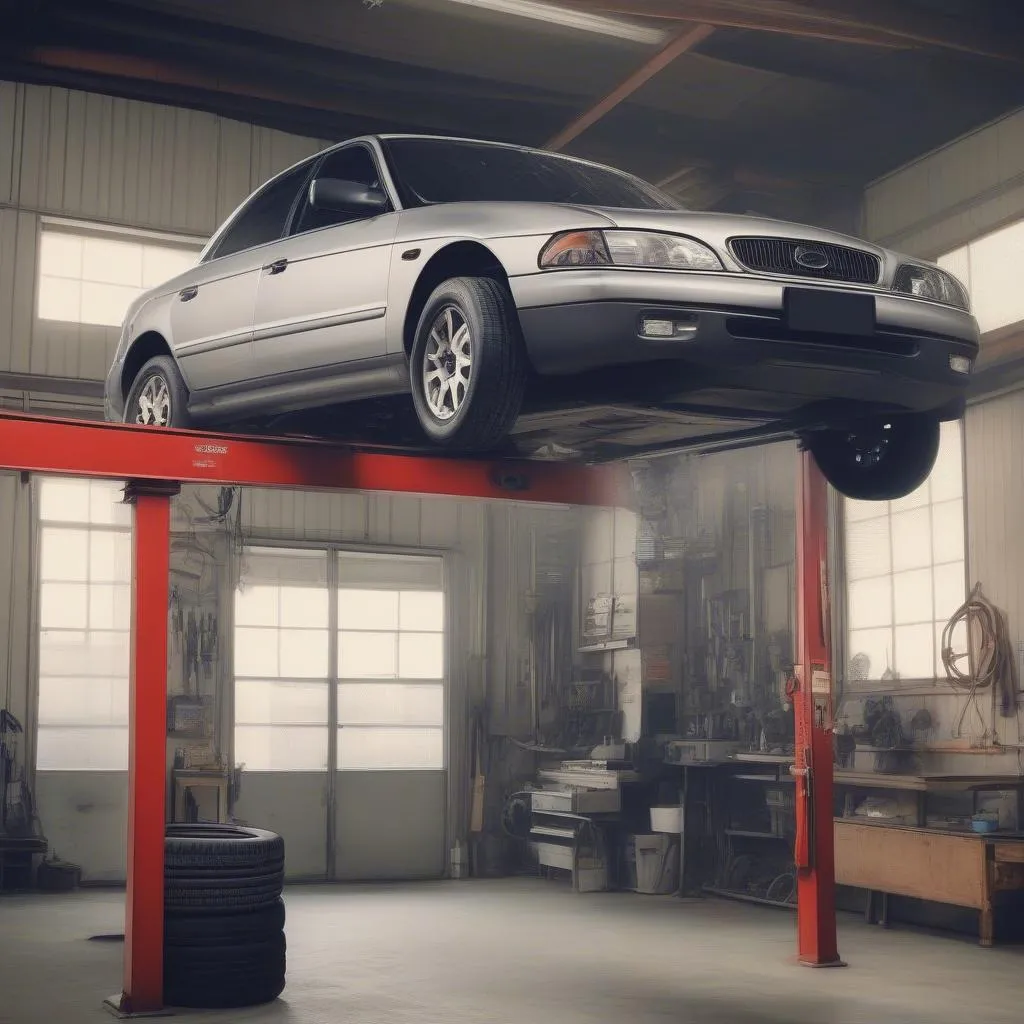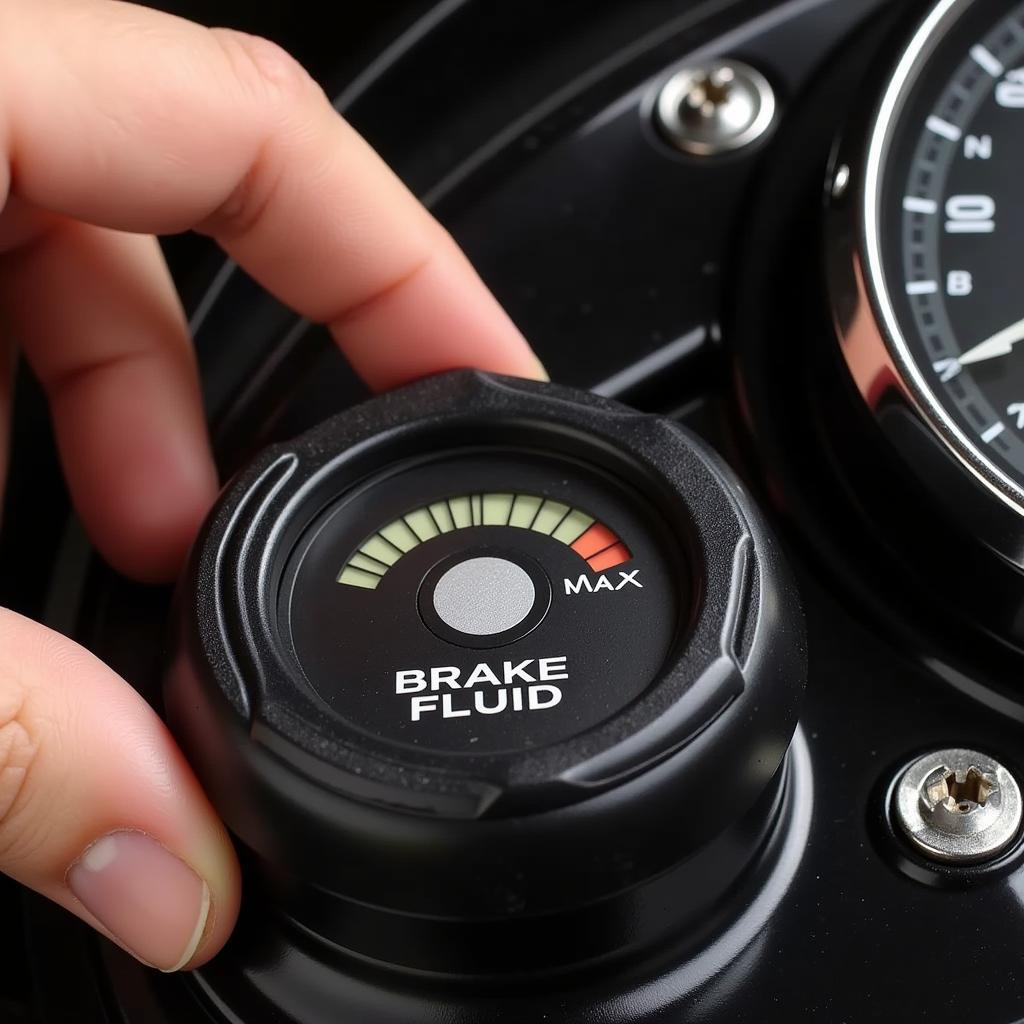The dreaded seat Ibiza ABS warning light. It glows ominously on your dashboard, a constant reminder that something isn’t quite right with your car’s Anti-lock Braking System (ABS). This article will guide you through understanding, diagnosing, and potentially fixing the issue behind your Seat Ibiza ABS warning light. We’ll cover common causes, DIY checks, and when to seek professional help.
 Seat Ibiza ABS warning light on the dashboard
Seat Ibiza ABS warning light on the dashboard
Understanding the ABS in Your Seat Ibiza
The ABS is a crucial safety system that prevents your wheels from locking up during hard braking. This allows you to maintain steering control and avoid skidding, especially on slippery surfaces. When the ABS light comes on, it signals a potential problem within the system, which could compromise its effectiveness. Ignoring it could be risky.
One possible cause is a failing wheel speed sensor which is necessary for the ABS system to function correctly. If you’ve recently experienced symptoms of a bad cell in car battery, symptoms of a bad cell in car battery, it might be worth checking as a low battery voltage can sometimes trigger spurious warning lights.
Common Causes of the ABS Warning Light
Several issues can trigger the ABS warning light in your Seat Ibiza. These range from simple fixes to more complex problems requiring professional attention:
- Low Brake Fluid: One of the most common culprits is low brake fluid. Check your brake fluid reservoir and top it off if necessary. If you’re seeing symptoms of a bad cell on car battery, bad cell on car battery, address that issue first, as electrical problems can sometimes interfere with sensor readings.
- Faulty ABS Wheel Speed Sensor: These sensors monitor the speed of each wheel and relay that information to the ABS control module. A damaged or dirty sensor can trigger the warning light.
- ABS Module Issues: The ABS module is the brain of the system. Internal faults within the module can lead to various problems, including the illumination of the warning light.
- Blown Fuse: A blown fuse in the ABS circuit can disable the entire system.
- Wiring Problems: Damaged or corroded wiring can disrupt communication between the various components of the ABS system.
Diagnosing the Problem
While some checks can be done at home, diagnosing ABS issues often requires specialized diagnostic tools.
DIY Checks
- Check Brake Fluid Level: Open the hood and locate the brake fluid reservoir. Ensure the fluid level is between the minimum and maximum marks.
- Visual Inspection: Inspect the visible wiring and connections related to the ABS system for any signs of damage or corrosion.
Professional Diagnosis
For anything beyond basic checks, it’s best to consult a qualified mechanic. They have the necessary diagnostic tools to pinpoint the exact cause of the problem. This might involve retrieving fault codes from the ABS module. If it’s determined you have one bad cell in car battery, one bad cell in car battery, you’ll want to address that separately, as electrical system issues can sometimes affect the ABS.
“Ignoring a persistent ABS warning light is never a good idea,” advises John Smith, Senior Automotive Diagnostician at Smith Auto Solutions. “It’s a critical safety system, and any malfunction should be addressed promptly.”
Solutions and Repairs
Depending on the diagnosis, repairs can range from simple fixes like topping up brake fluid or replacing a fuse to more complex procedures like replacing a wheel speed sensor or the ABS module itself. A bad cell in car battery symptoms, bad cell in car battery symptoms, can sometimes mimic other issues, so it’s crucial to accurately diagnose the root cause.
“Modern cars rely heavily on electronics,” explains Sarah Jones, Lead Technician at Jones Auto Repair. “A seemingly simple warning light can sometimes indicate a more intricate electronic issue.” She further emphasizes the importance of professional diagnosis for any persistent ABS warning light. Perhaps your car battery has bad cell, car battery has bad cell, impacting the electrical system; it’s crucial to identify and rectify this.
Conclusion
The seat Ibiza ABS warning light shouldn’t be ignored. While some causes might be minor, addressing the issue promptly is essential for maintaining the safety and reliability of your vehicle. Don’t hesitate to seek professional help if you’re unsure about diagnosing or fixing the problem yourself.
FAQ
- Can I drive my Seat Ibiza with the ABS light on? While you can still drive, the ABS functionality might be compromised. Avoid hard braking and seek professional help as soon as possible.
- How much does it cost to fix an ABS light on a Seat Ibiza? The cost varies depending on the cause and the necessary repairs. It can range from a few dollars for a new fuse to several hundred dollars for a new ABS module.
- How do I reset the ABS light on my Seat Ibiza? The light will usually reset itself once the underlying issue is fixed. However, a diagnostic tool might be required to clear any stored fault codes.
- Can a low battery cause the ABS light to come on? While less common, a very low battery voltage can sometimes cause spurious warning lights, including the ABS light.
- How often should I check my brake fluid level? It’s recommended to check your brake fluid level at least once a month.
- What are the symptoms of a failing ABS module? Symptoms can include an illuminated ABS light, erratic ABS behavior, or complete ABS failure.
- Can I replace an ABS wheel speed sensor myself? While possible, it requires some mechanical knowledge and the right tools. It’s often best to leave this to a professional.



